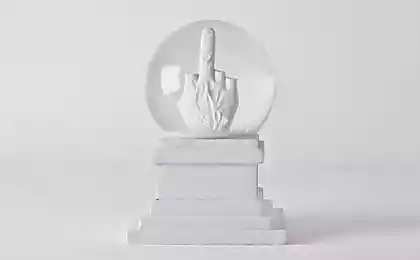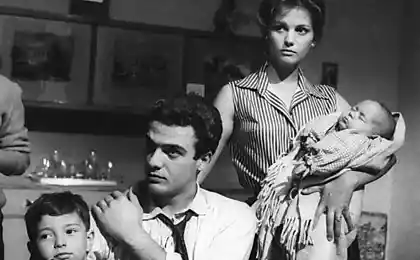529
Why do people Social?
Evolutionary truth may seem otvratitelnoy
What drives people to watch a film or to work together to open up new land or even a new planet in a distant solar system? What makes the evolutionary process of crows gather together to help each other look for food? All these questions relate to social animals (including humans) - creatures whose life even at times dependent on other members of the same species.
Respond to the question of how social behavior has arisen, have tried zoologist Joel Menё and colleagues. Their study is published in the journal «American Naturalist».

The subject of their research has been common earwig or European. These insects observed that the researchers called primitive social behavior: a mother always takes care of young animals, called nymphs, for several weeks after they hatch.
The study authors noted that the care of the mother and offspring may be the key to social behavior in all animals that exhibit this behavior. But there is another option - Cooperation brothers.
Brothers and sisters from one generation earwigs kill and eat each other if food is scarce, but the nymphs also share food with each other, when the mother is not with them. Earwig is used for this scheme anus - mouth: digested food from the stomach of a nymph falls through the anus to mouth the other.
Menё and his colleagues suggest that social behavior has evolved because of this simple practice of exchanging food. It is important that even species with primitive social behavior siblings interact and sociality is limited not only parental care of offspring.
There is a possibility that the common earwig - an example of an early intermediate level in the transition from solitary to highly developed forms of social life. And, perhaps, the human ability to cooperate, too, began with the primitive food sharing between brothers and sisters.
via factroom.ru

What drives people to watch a film or to work together to open up new land or even a new planet in a distant solar system? What makes the evolutionary process of crows gather together to help each other look for food? All these questions relate to social animals (including humans) - creatures whose life even at times dependent on other members of the same species.
Respond to the question of how social behavior has arisen, have tried zoologist Joel Menё and colleagues. Their study is published in the journal «American Naturalist».

The subject of their research has been common earwig or European. These insects observed that the researchers called primitive social behavior: a mother always takes care of young animals, called nymphs, for several weeks after they hatch.
The study authors noted that the care of the mother and offspring may be the key to social behavior in all animals that exhibit this behavior. But there is another option - Cooperation brothers.
Brothers and sisters from one generation earwigs kill and eat each other if food is scarce, but the nymphs also share food with each other, when the mother is not with them. Earwig is used for this scheme anus - mouth: digested food from the stomach of a nymph falls through the anus to mouth the other.
Menё and his colleagues suggest that social behavior has evolved because of this simple practice of exchanging food. It is important that even species with primitive social behavior siblings interact and sociality is limited not only parental care of offspring.
There is a possibility that the common earwig - an example of an early intermediate level in the transition from solitary to highly developed forms of social life. And, perhaps, the human ability to cooperate, too, began with the primitive food sharing between brothers and sisters.
via factroom.ru
In Somalia, there is a stock exchange, where everyone can earn by investing in pirates
10 facts about the ancient Maya civilization, which you did not know
























